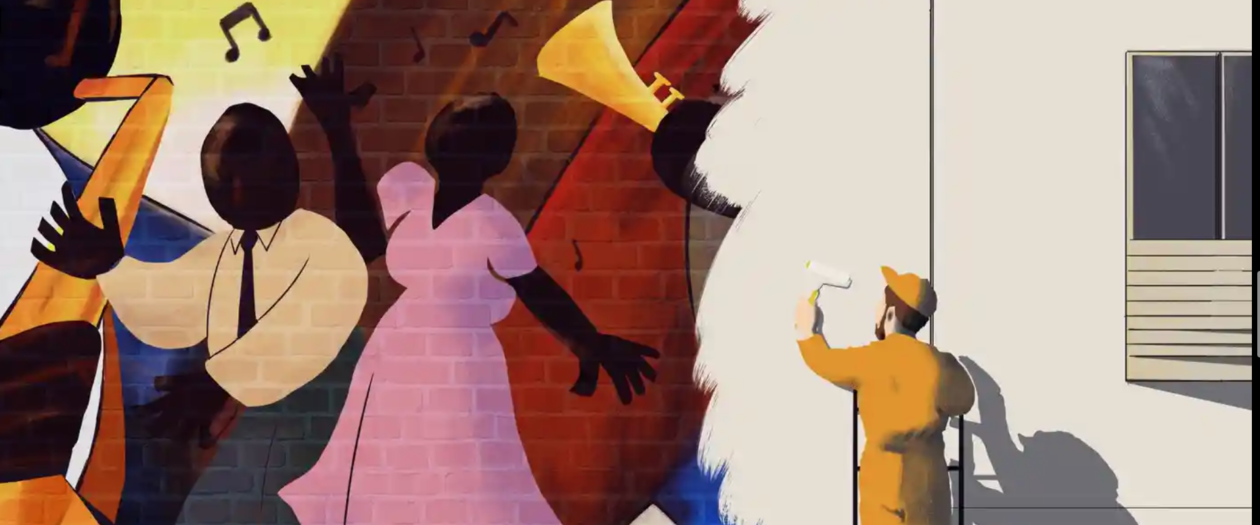The hypothesis that gentrification has affected the residential aspect of Harlem and the political and tenant advocacy resources have contributed, to an extent, to the gentrification, was proven correct in this study. The field observation found that there are plans to construct new mixed-use buildings in Harlem that will be used by both residential and business aspects. This observation was essential because it supported the idea that as new buildings are developing throughout Harlem, the community and the history of Harlem is shifting. For instance, from West 145th street Harlem to the West 125th street from Broadway Avenue to Malcolm X Blvd there is a noticeable increasing number of residential buildings being constructed in place of some historical buildings that stood there for years. The problem with the expansion of residential housing is that it results in rent increasing and shifts the demographic of the neighborhood.
During the time of reconstruction there is a distinct increase of the white population in Harlem, the low-income families start to get displaced due to the increases in rent leaving many households available for others to move into. Not only that but an increase of rehabilitation in old buildings stocks also plays into it, the buildings are being remodeled to feed into the new residents’ aesthetic. In an interview with Harlem resident Momina Ahmed, when asked “From the years you have been living in Harlem, do you believe that there has been a large demographic change due to gentrification?,” she responded, “There definitely has been a demographic change. When I first moved here, almost entirely the community was Hispanic and Black, with few other minorities. Recently, more white people have been seen in our communities. I am assuming it is because of the creation of the fancy buildings. This change is causing prices to go up and making things unaffordable for us people who have been here for decades.” This illustrates the consequences of gentrification in Harlem, it is becoming harder for the residents in Harlem to keep up with the recent changes, it becomes a chain reaction once a business or apartment building rises their prices, the rest do so as well to compete.
In the survey, the results found connect back to the concerns of residents not being able to stay in the new Harlem. For instance, in a survey to Harlem residents, 56.7% survey participants said they see changes in Harlem yearly and 36.7% said they see changes in their neighborhood very often. This is a problem for Harlem tenants because along with property changes there becomes business changes as well. Not only would rent spike, but people would also get offered buy out because the landlord want to reconstruct the building, or they have tenants willing to pay a higher price. When asked whether they consider themselves part of the community in Harlem, 46.7% do not know whether they are part of the community and 20% answered no since the continuous changes that is making Harlem unrecognizable. This proves that as gentrification becomes prominent in Harlem, displacement becomes a growing concern for the residents. This further supports the hypothesis that residential gentrification is affecting the residents of Harlem because they do not fit the standards to live in New Harlem. Some unexpected results from collecting interviews and survey were that the community board members declined our offer of interviewing and surveying to collect data on their position in the residential gentrification in.
It was not surprising to find that residents of Harlem are struggling physically and mentally due to the stress put on them as gentrification takes Harlem by a storm. It was also not surprising that many of the Harlem residents witness major changes in the area monthly and yearly. I thought it was particularly interesting that the community board members and councils’ members did not want to the part in the survey and interview session because they did not want their names to be part of the research. This was interesting to me because I thought they would like to voice their opinions and their stance on residential gentrification and clear up any misleading information there was of them not doing anything to help residents.
Moving forward, it would be beneficial if we were able to gather more information and resources of the families that are being displaced. If there was no pandemic my team could have gone into the field and done more extensive research. We could have observed families that are both benefiting from gentrification and are being displaced by gentrification, this would have helped to further our research because it would allow us to see the environment both families are living in and how they are adapting as well as ask questions as to how and why they got to this position.


